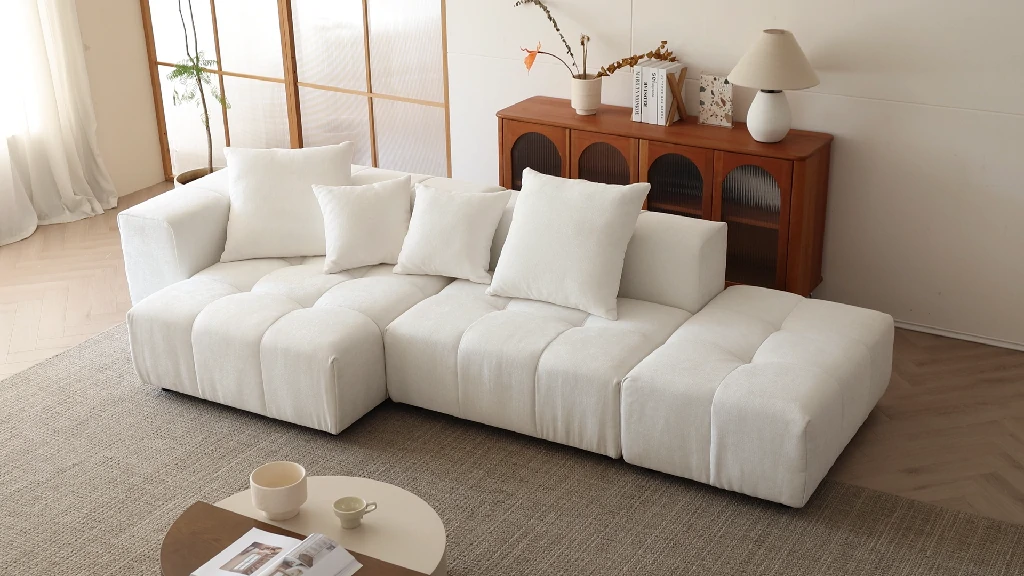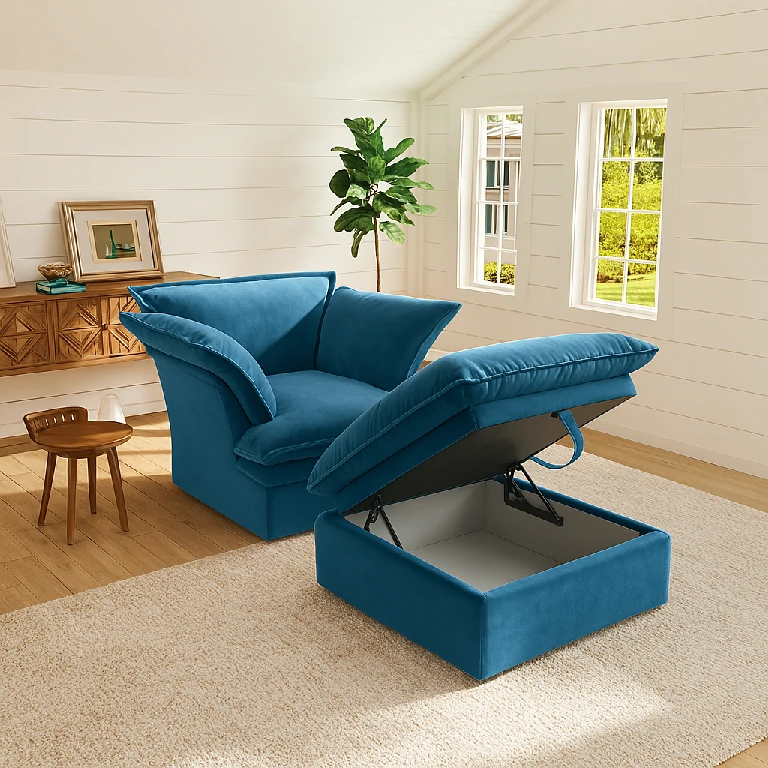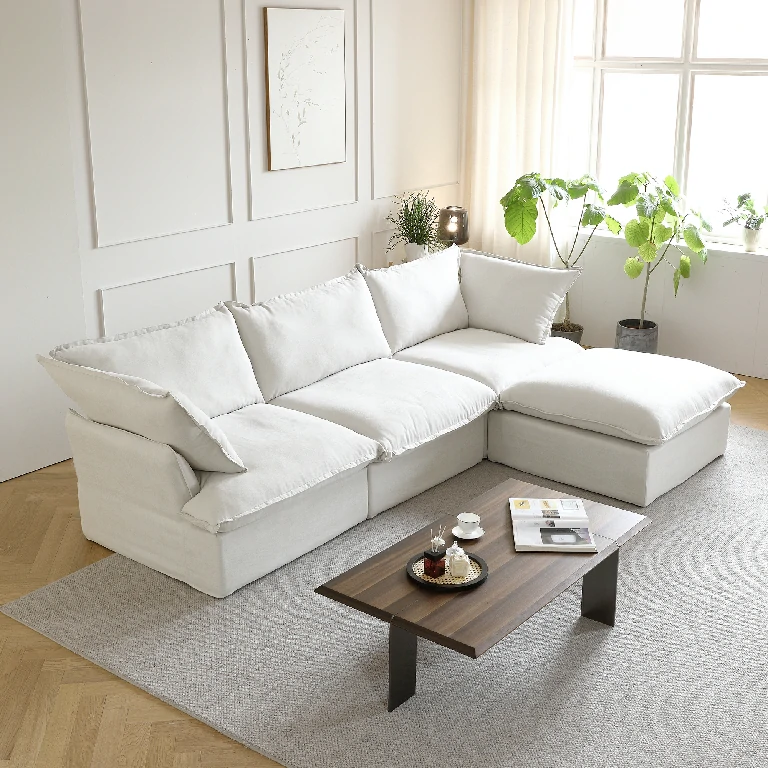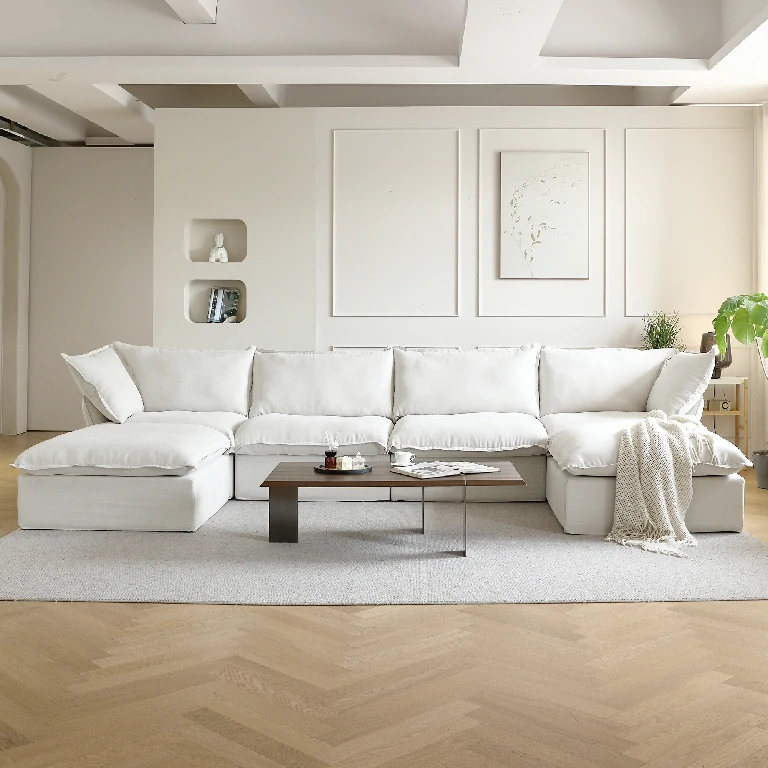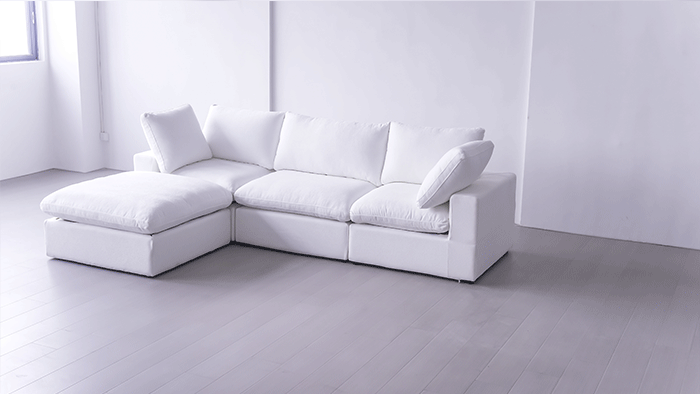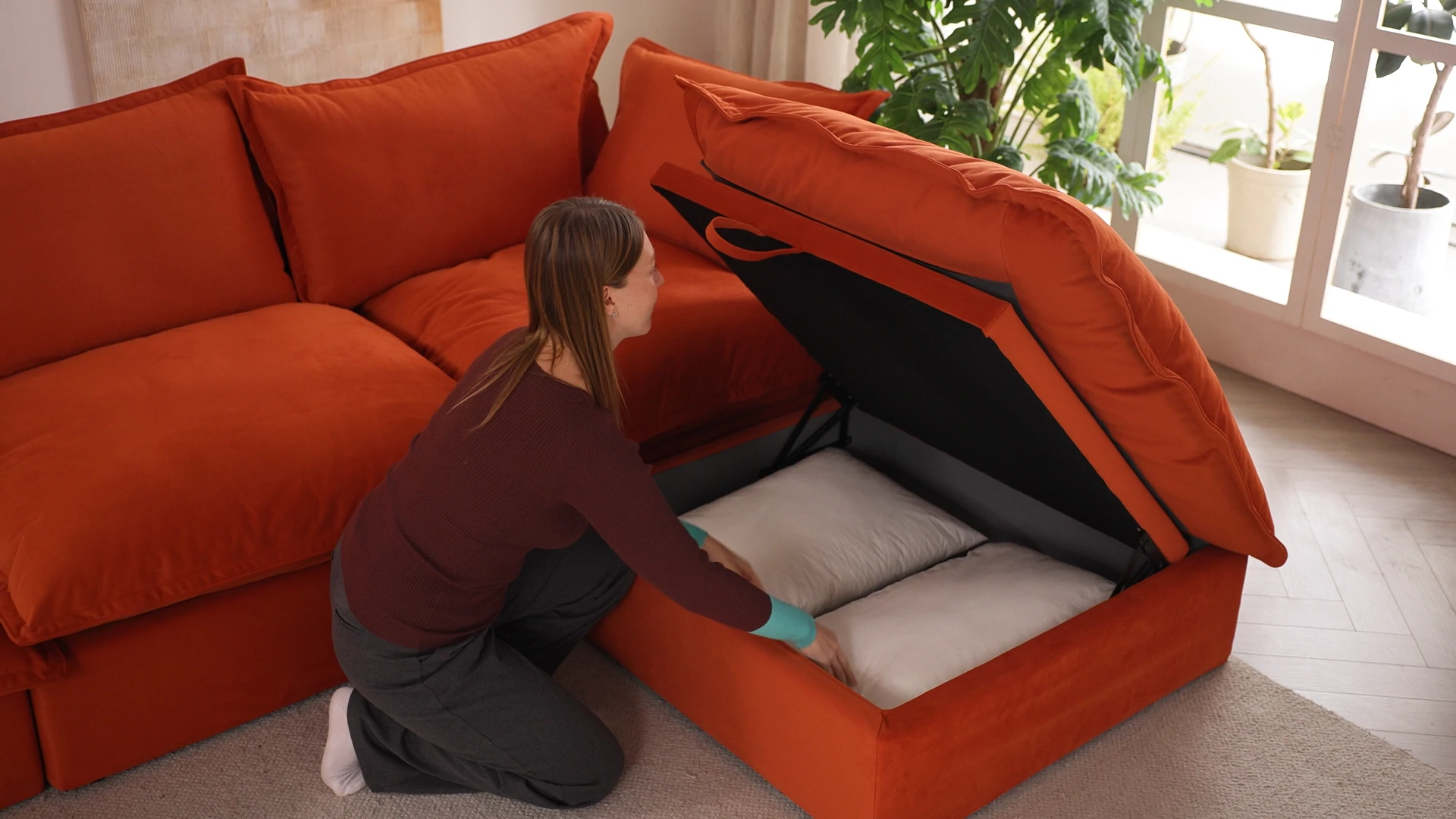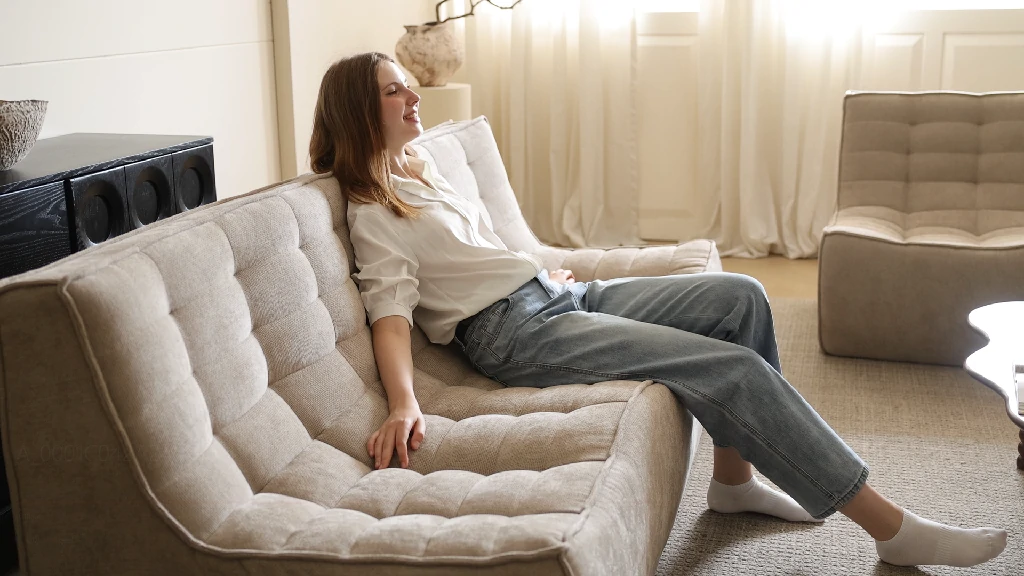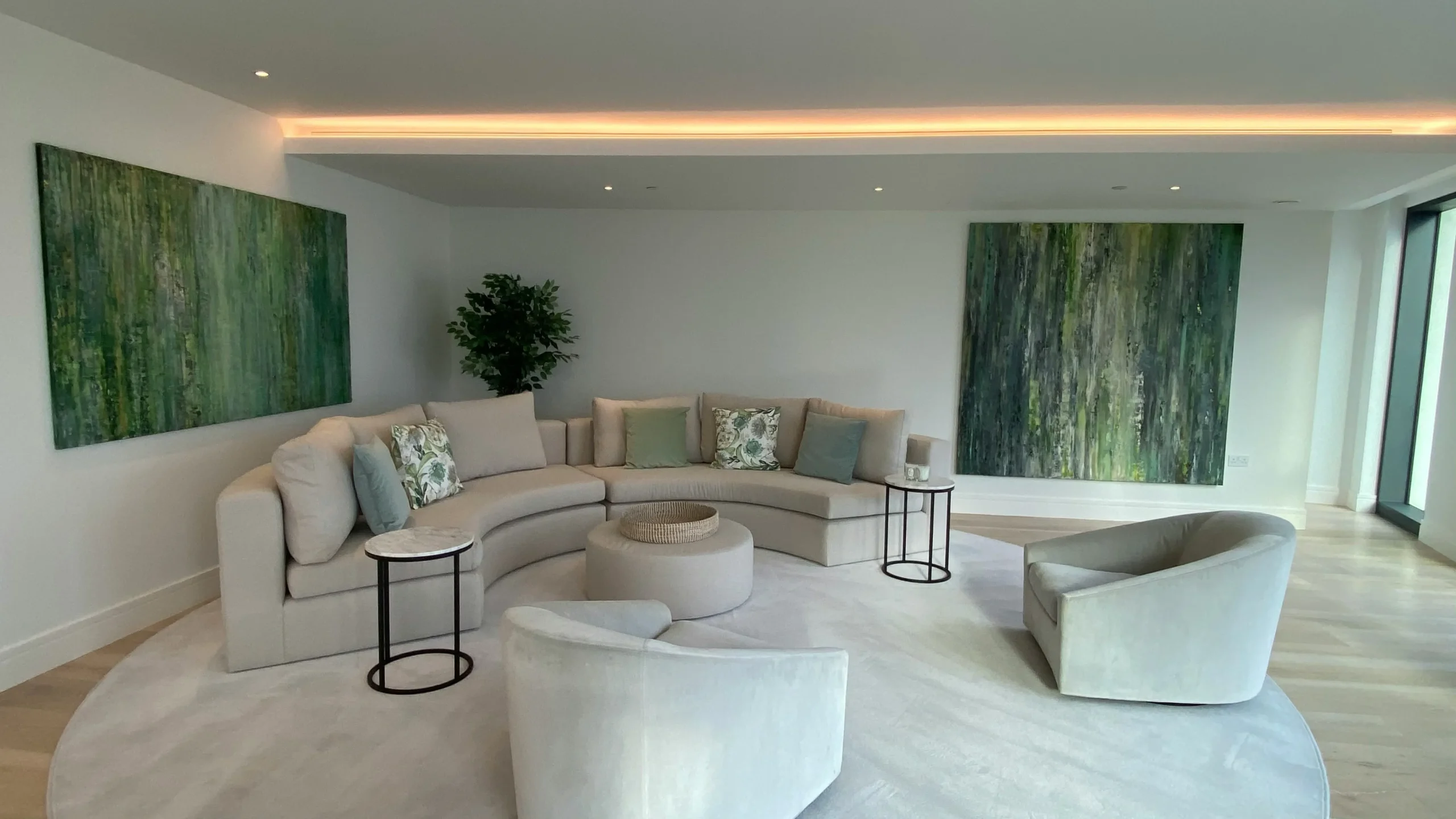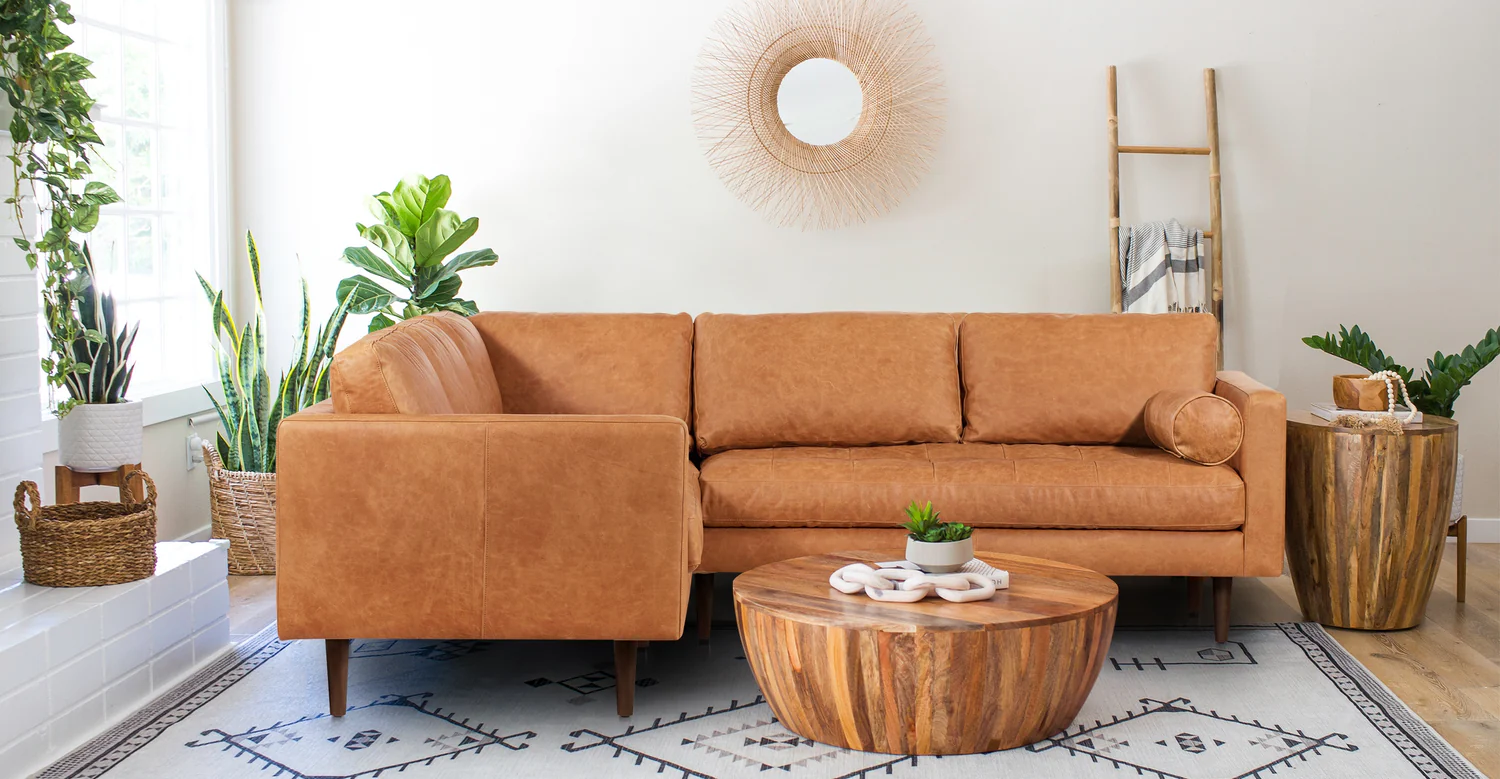Modular sofas are designed with flexible living in mind. They consist of individual sections (or "modules") that can be rearranged or removed to suit different seating needs and room layouts. What truly sets modular sofas apart is that some pieces are transformative — they can change function.
For example, a modular sofa might include:
- A hidden pull-out bed module
- A chaise lounge with built-in storage
- A section that lifts to reveal a sleeper mechanism
Modular sofas are ideal for multi-functional spaces and people who value adaptability. Whether you’re working with a compact studio or looking for a dynamic setup for guests, modular sofas offer customizability with purpose.

